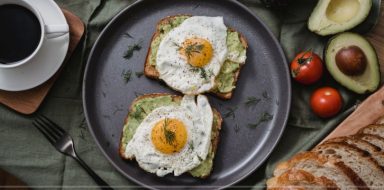The Feingold Diet for ADHD
Attention deficit hyperactivity disorder (ADHD) is a condition that causes someone to have difficulty focusing on things they have little or no interest in. For example, although most people is not excited to brush their teeth, we do it anyway because we know it is necessary. Someone with ADHD might have to push themselves to brush their teeth because it is too boring for them to focus on.
For adults with ADHD and parents of ADHD children, symptoms can feel overwhelming. That’s why in the 1970s, Dr. Benjamin Feingold, a pediatrician, began experimenting with ways to relieve ADHD symptoms using what is now called the Feingold diet.
What Is the Feingold Diet for ADHD?
The Feingold diet is based on the theory that, by eliminating foods containing harmful substances, ADHD symptoms can improve. It is one of many so called “elimination diets”.
This article will give you the basics of the Feingold diet, including what foods you are allowed to eat and not eat, and how the diet works.
Is the Feingold Diet Worth My Time?
At some point you have to ask yourself, “is the Feingold diet worth my time?” Well, you should know that you are supposed to see an improvement in ADHD symptoms within three weeks to three months.
In other words, even if the diet does not work, it is only going to take you a maximum of three months to find that out. And say it does not work, then you will still be eating healthier. So, no matter what, you have nothing to lose by trying the Feingold diet.
The 2 Stages of the Feingold Diet
Stage 1
If you believe the saying, “you are what you eat”, then it will not surprise you that the food you eat can have an impact on your health. Stage one is all about removing those bad foods.
The first stage begins by completely changing your eating habits. To do so, you must remove certain things from your diet:
- Artificial (synthetic) color. Food dyes are listed in a number of ways – by name, by FD&C number, by e-number, or not at all.
- Artificial (synthetic) flavor. The thousands of artificial flavoring chemicals are listed as “flavoring” or “artificial flavoring” except for artificial vanilla. Fragrances may be called “fragrance” or “perfume”.
- Three petrochemical preservatives. These will include butylated hydroxyanisole (BHT) and (tertiary butylhydroquinone) TBHQ.
- Artificial (synthetic) sweeteners. The main sweeteners to be aware of are aspartame and sucralose.
- Salicylates. These are chemicals similar to aspirin, which occur naturally in some foods. They are sometimes added to medicines and personal care products.
- Additional additives. This can include anything from corn sweetener, to sulfites, to nitrates and more. May sure to read the ingredients on the foods you buy.
Stage 2
Before making it to stage two, you must first see an improvement in ADHD symptoms during stage one. If you do not see an improvement in symptoms in stage one, then you should stop using the Feingold diet.
Assuming you do see an improvement in ADHD symptoms, you can now start experimenting through trial and error in stage two to see which salicylates you can add back into your diet.
You have to experiment because every individual is unique, and what makes ADHD symptoms worse for one person will not necessarily make symptoms worse for someone else.
While some people find they need to remain on stage one, others are able to tolerate some salicylate-containing items occasionally, and others can eat them freely. Take note, the artificial colors, flavors, preservatives and sweeteners removed from your diet during stage one are never reintroduced. Only salicylates are re-introduced.
Foods not Allowed on the Feingold Diet
- Almonds
- Apples
- Apricots
- Aspirin
- Berries
- Cherries
- Cloves
- Coffee
- Cucumbers
- Currants
- Grapes
- Nectarines
- Oil of wintergreen
- Oranges
- Peaches
- Peppers (bell and chili)
- Pickles
- Plums
- Prunes
- Raisins
- Rose hips
- Tangelos
- Tangerines
- Tea
- Tomatoes
Did you know there are foods to avoid with eosinophilic esophagitis? Removing these from your diet can help manage symptoms and flare-ups.
Foods Allowed on the Feingold Diet
- Bananas
- Beans
- Bean sprouts
- Beets
- Brussels sprouts
- Cabbage
- Cantaloupe
- Carrots
- Cauliflower
- Celery
- Dates
- Grapefruit
- Honeydew
- Kale
- Kiwi
- Lemons
- Lentils
- Lettuce
- Mangoes
- Mushrooms
- Onion
- Papaya
- Pears
- Peas
- Pineapple
- Potatoes
- Spinach
- Squash
- Sweet corn
- Sweet potato
- Watermelon
- Zucchini
How Do I Know What Food to Buy and What Foods to Avoid?
With the Feingold diet, you will have to purchase materials from the Feingold Association that give you all the information you need. They regularly update their lists for consumers in the U.S. and Canada.
These materials will cost you anywhere from a one-time payment of $30 to $125. They also sell cookbooks and other things you might want to buy.
It is hard to find recipes suitable for the Feingold diet by searching the web. You may have better luck by joining a Facebook group for the Feingold diet.
Is There Scientific Evidence Backing up the Feingold Diet?
To be frank, no. Most scientists believe the Feingold diet does not work. There have been no large-scale studies that prove the diet works.
However, the Feingold diet certainly is probably healthier than your current diet. As a result, going on the Feingold diet may improve ADHD symptoms, in addition to improving your sleep schedule and level of happiness.







